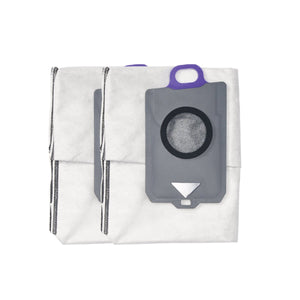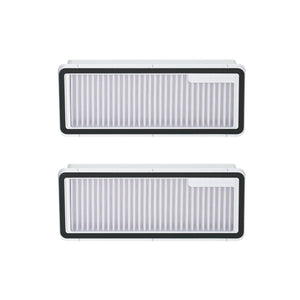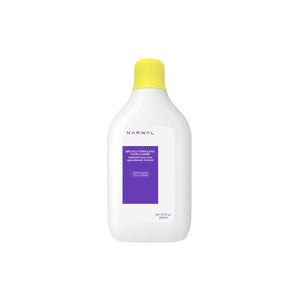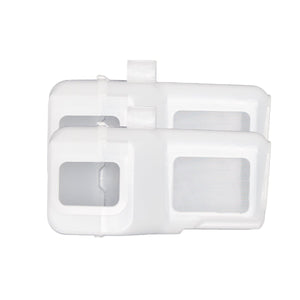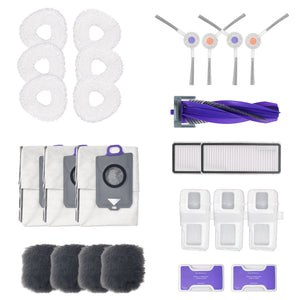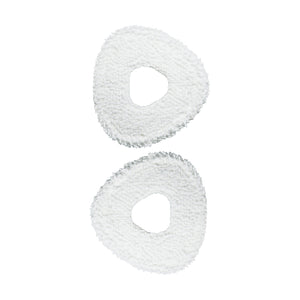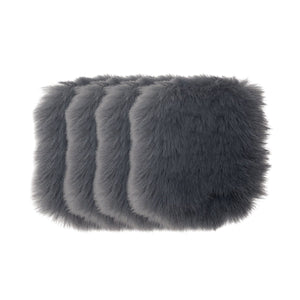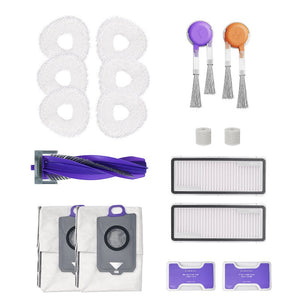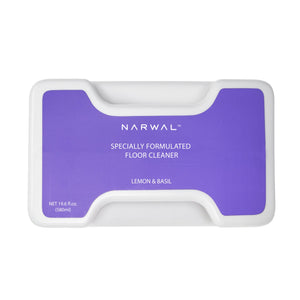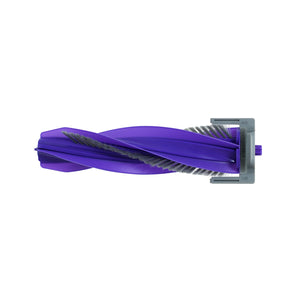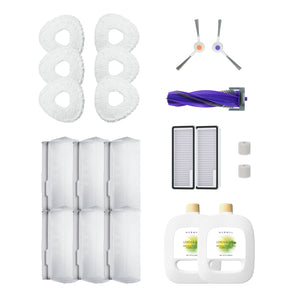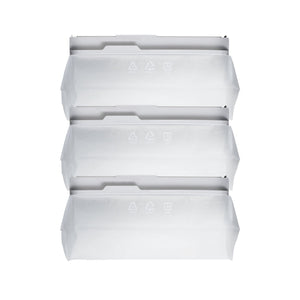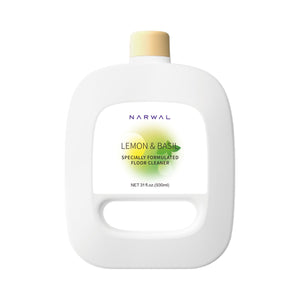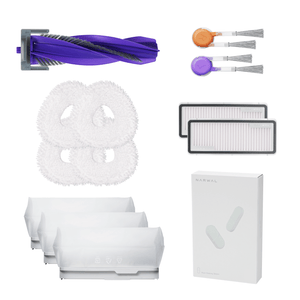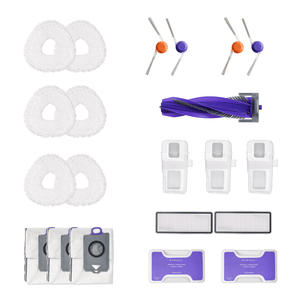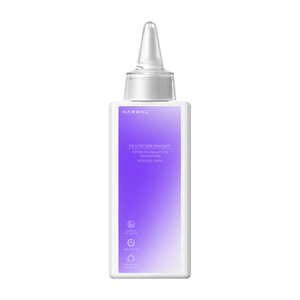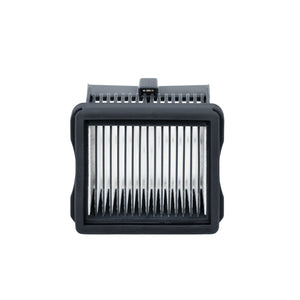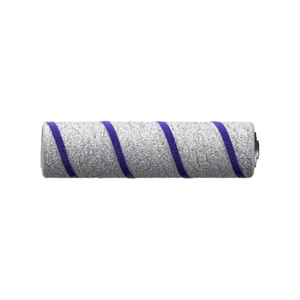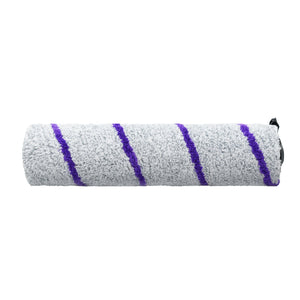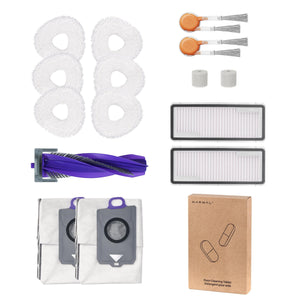How long do robot vacuums last in 2025? Most models work efficiently for about 4 to 6 years before performance starts to decline. Over time, motors weaken, batteries lose capacity, and repairs become less cost-effective.
This 2025 guide reveals real lifespan data, brand comparisons (Roomba, Shark, Narwal, and more), and practical advice on when to replace your robot vacuum for the best long-term value. If you’re comparing models or want to know which robot vacuum lasts the longest, you’ll find clear answers here.
Average Lifespan of Robot Vacuums (How Long Do They Last?)
When considering how long do robot vacuums last, most recent studies and user reports suggest the average robot vacuum lifespan is about 4 to 6 years under normal home use. Higher quality robot vacuum cleaners from leading brands like Roomba, Roborock and Narwal may even reach or exceed that, especially if you follow recommended robot vacuum maintenance routines. Buyers searching for which robot vacuum lasts the longest should pay attention to material durability and battery quality.
Average Robot Vacuum Lifespan Compared to Other Types
While robot vacuums are our specialty, it’s worth noting how different vacuum types compare in lifespan:
-
Upright Vacuums: 2–4 years
-
Canister Vacuums: Around 2–3 years
-
Cordless Stick Vacuums: 1–2 years
-
Handheld Vacuums: 1–2 years
-
Robot Vacuums: Typically 4–6 years, depending on use and care
Robot vacuums may have a shorter history, but top-tier models like Narwal are built with premium components and automated care systems that promote longer life and consistent performance.
Lifespan by Brand: How Long Different Robot Vacuums Last (2025)
While the average robot vacuum lasts about 4–6 years, longevity can vary greatly between brands depending on build quality, motor durability, and maintenance design.
To make it easier to compare, here’s a breakdown of the typical lifespan, key strengths, and replacement cost levels for the most popular robot vacuum brands in 2025:
|
Brand |
Typical Lifespan (Years) |
Key Strengths |
Replacement Cost Level |
|
Narwal |
Around 6–7 years (with regular upkeep) |
Self-cleaning system, premium build quality |
Medium |
|
Roomba (iRobot) |
Around 5–6 years |
Durable motor, strong after-sales support |
Medium |
|
Roborock |
About 4–6 years |
Smart mapping, efficient navigation |
High |
|
Shark |
Around 3–5 years |
Budget-friendly, easy to maintain |
Low |
Premium models like Narwal and Roomba tend to have the longest lifespan due to stronger motors and better component protection. Roborock offers solid performance but higher upkeep costs, while Shark provides a shorter yet affordable option for lighter use.
Note: These lifespan estimates are derived from publicly available product data, independent reviews, and verified user feedback from 2023–2025. Actual results may vary depending on usage habits, maintenance, and environment.
Key Factors That Affect Robot Vacuum Lifespan
Robotic vacuum cleaners are now a must-have in many homes because they make cleaning floors easy and efficient. How long they last depends on several factors. They include:
Frequency and Intensity of Use
The more often your robot vacuum runs, especially in large or cluttered homes, the more wear and tear it experiences. Daily operation in high-traffic areas accelerates the aging of wheels, brushes, and internal motors, compared to moderate use in smaller, cleaner spaces. Overuse can also stress the battery, shortening its overall capacity.
Component Quality and Construction
High-quality vacuums with durable materials last significantly longer than budget models. Premium designs—like those used in Narwal robots—feature reinforced brush assemblies, brushless motors, and rugged housing that hold up against daily friction. A well-constructed robot vacuum won’t just clean better—it’ll last longer too.
Maintenance Habits
Regular upkeep plays a key role in how long a robot vacuum lasts. When sensors or filters are clogged with dust and debris, the machine has to work harder—putting extra strain on motors and reducing efficiency over time. In contrast, consistent care helps prevent unnecessary wear and keeps essential components running smoothly, extending the overall lifespan of the device.
For detailed cleaning steps and part-by-part maintenance guidance, visit our Robot Vacuum Maintenance Guide.
Type of Flooring and Debris
The type of surface you clean makes a big difference. Thick rugs, deep-pile carpets, and hard debris like pet kibble or sand increase suction demands and motor strain. Homes with pets often require more powerful vacuums—and if not designed for it, lower-end models wear out faster. Narwal vacuums intelligently detect floor type and dirt levels, automatically adjusting cleaning intensity to avoid overexertion.
Battery Life and Charging Conditions
Lithium-ion batteries typically last 1–2 years before performance declines. Improper charging habits—like constantly draining to 0% or storing in hot environments—can dramatically shorten battery life. Narwal robots use intelligent charging and energy management systems to extend battery health, always docking safely before energy levels run too low.
Environmental Conditions
Operating your vacuum in dusty garages, humid bathrooms, or areas with extreme temperature shifts accelerates hardware degradation. Moisture can corrode electrical parts, while dust infiltration leads to filter overload. Using your robot vacuum in clean, climate-controlled rooms gives it the best chance for a long, productive life.
Navigation and Obstacle Avoidance
Each time your robot bumps into furniture or gets tangled in cords, it risks sensor damage and motor strain. Narwal models use advanced triple-laser navigation to detect obstacles with millimeter-level precision—reducing impact events and preserving structural integrity over time.
Software Performance and Updates
Good hardware needs great software. Efficient navigation algorithms minimize unnecessary turns and repeated paths, reducing wear. Narwal frequently releases over-the-air firmware updates that optimize movement logic, enhance dirt detection, and fix bugs—keeping the vacuum efficient and responsive throughout its lifecycle.
Storage and Idle Time
Where and how you store your vacuum matters. Keep the docking station on a level surface in a dry, shaded spot, away from heaters or direct sunlight. Long-term idle time in poor storage conditions can weaken battery chemistry and damage sensors, especially if moisture is involved.
How Long Do Robot Vacuum Batteries Last?
Most robot vacuum batteries last about 1–2 years, and high-end models with larger packs can deliver strong performance for up to 90 minutes per charge.
The lifespan depends on usage frequency, environment, and charging habits. Lithium-ion batteries, which power most modern robot vacuums, lose capacity gradually, and in many cases the battery dictates the overall life expectancy of the machine.
In terms of runtime, most vacuums operate 60–120 minutes per charge. Premium models, such as the Narwal Flow with its 6400mAh battery, are designed for extended operation and are often listed among the robot vacuums with the longest run time.
To extend lifespan, avoid running the battery completely flat, keep the device in a cool environment, and always use the official charging dock. If power capacity drops significantly even with proper care, replacing the battery is usually more cost-effective than replacing the entire robot vacuum.
How Long Does a Robot Vacuum Take to Clean?
Most robot vacuums complete a session in about 60 to 120 minutes, depending on battery size and home layout. A compact apartment might be done in under an hour, while larger homes with multiple rooms often require the full runtime.
For example, a typical Roomba runs for around 90 minutes before docking. Premium models, such as Narwal Flow with its 6400mAh battery, are designed for longer, more efficient sessions—often finishing faster thanks to smart navigation that avoids unnecessary overlap. Likewise, the Narwal Freo series automatically adjusts cleaning intensity to balance thoroughness and runtime.
Knowing how long a robot vacuum will clean helps you schedule runs more effectively, without worrying about mid-clean interruptions.

Simple Habits That Help Your Robot Vacuum Last Longer
A few small habits can make a big difference in how long your robot vacuum performs at its best. By creating a favorable environment and following basic usage practices, you can reduce stress on the machine and extend its overall lifespan.
-
Avoid overusing it in cluttered areas. Frequent bumps and tangles can wear out sensors, wheels, and navigation systems faster.
-
Keep the charging dock in a cool, stable area. Extreme heat or humidity can shorten battery and circuit longevity.
-
Replace filters and brushes on schedule. Timely part replacement helps maintain airflow and motor efficiency.
-
Run moderate cleaning schedules. Overworking the robot daily can accelerate wear, while balanced usage maintains performance longer.
Signs Your Robot Vacuum Might Be Nearing the End
Even the most advanced robot vacuums won’t last forever. Over time, signs of aging will start to surface—some subtle, others impossible to ignore. Recognizing these red flags early can help you decide whether it's time for a robot vacuum replacement or just a quick maintenance fix.
Shortened Battery Life
If your robot vacuum struggles to hold a charge—even after installing a new battery—it could indicate that internal charging components or power regulation circuits are wearing out. You may notice shorter cleaning times or the vacuum docking more frequently than usual.
Decreased Suction Power
One of the most common signs of deterioration is reduced suction performance. If your robot starts leaving behind dust, pet hair, or larger debris even after filter and brush replacements, it’s likely that the internal motor is losing efficiency.
Unusual Noises or Overheating
Loud grinding, clicking, or whistling sounds can indicate motor or gearbox issues. If your vacuum also feels hot to the touch or emits a burning smell, stop using it immediately—this could be a safety risk and a clear sign of robot vacuum malfunction.
Frequent Errors and Navigation Failures
If your robot vacuum keeps showing error messages, gets stuck in open areas, or spins in circles, its sensors or mapping system may be compromised. While minor bugs can be resolved with firmware updates, recurring errors may signal sensor fatigue or navigation system failure.
Trouble Transitioning Between Floor Types
Robots that once easily handled carpets and thresholds may start hesitating or getting stuck. This might be due to wheel motor degradation or worn traction surfaces. Narwal vacuums, for instance, include auto-sensing algorithms to recognize these issues early and alert users via the app.
Inconsistent Cleaning Coverage
Missed spots, overlapping passes, or random pathing—especially after calibration—could be signs of degraded memory or mapping modules. If re-mapping the house doesn’t solve the problem, the internal logic board may be on its way out.
Dirt Left Behind After "Cleaning Complete"
If your robot vacuum reports a finished cycle but leaves visible messes, the combination of failing suction, dirty sensors, or worn brushes could be to blame. Persistent underperformance despite part replacements usually means it’s time for an upgrade.
No Longer Compatible with Updates or App Features
As technology evolves, older models may stop receiving firmware updates or lose compatibility with newer smartphone apps. Narwal models, for example, benefit from OTA updates to extend software life. But when updates stop arriving, so does the potential for improvement.
Physical Wear and Cracks
Cracks in the shell, worn wheels, or a loose bumper are more than cosmetic issues—they can affect navigation, drop detection, and overall cleaning performance. Damage to the charging pins or docking station can also prevent proper recharging.
When you start noticing multiple signs from this list—especially reduced runtime and poor cleaning results—it might be more cost-effective to invest in a new robot vacuum than to keep repairing the old one.

Premium Robot Vacuums with Longer Lifespan
Investing in a premium robot vacuum doesn’t just deliver cleaner floors—it also extends the robot vacuum lifespan, reduces breakdowns, and minimizes long-term maintenance. High-end models combine stronger hardware, smarter software, and self-care features that help them last beyond the average 4–6 years. Below are some of the best robot vacuums and mops in 2025 that stand out for durability and reliability:
Narwal Freo Z Ultra – Intelligent Longevity
The Freo Z Ultra is built for users who want a robot vacuum that can truly outlast the competition. With dual RGB cameras and AI recognition of 120+ objects, it avoids collisions that cause wear and tear. Its DirtSense™ system adapts suction and mopping in real time, preventing overexertion of the motor. Plus, the all-in-one base automatically washes, dries, and maintains mop pads—reducing manual upkeep and extending component life.
[cta:narwal-freo-z-ultra-robot-vacuum-mop]
Narwal Flow – Next-Gen Durability
Designed for homes that demand both power and care, Narwal Flow delivers 22,000Pa suction with a self-cleaning FlowWash mopping system. The DualFlow tangle-free wheels and AI-powered dual cameras help it navigate smoothly, reducing wheel stress and mechanical strain over time. With a 6,400mAh battery and smart charging, it’s also a robot vacuum with the longest run time in its class, making it ideal for large households.
[cta:flow-robot-vacuum-and-mop]
Roborock S8 Pro Ultra – Reliable Competitor
Known for its sturdy build and auto-maintenance dock, the Roborock S8 Pro Ultra features dual rubber brushes that resist tangling and a self-emptying system that cuts down on daily care. Its strong suction and precise LiDAR mapping allow it to maintain efficiency even in larger homes.
Roomba j9+ – Trusted Brand with AI Navigation
iRobot’s Roomba j9+ is a long-time favorite for its Poop Detection AI and consistent mapping performance. Its Clean Base holds weeks of debris, reducing hands-on cleaning, while the robust design is engineered for years of daily use.
Premium models from brands like Narwal, Roborock, and iRobot are built to last longer than budget alternatives. As noted in 2025 robot vacuum reviews, investing in a high-end robot vacuum with mop not only improves cleaning quality but also ensures a longer lifespan, fewer repairs, and better overall value.
User Mistakes That Shorten a Robot Vacuum’s Lifespan
Even well-built robot vacuums can wear out faster when used improperly. Certain habits gradually weaken key components, reduce suction power, or damage sensors. Avoiding these common mistakes can help your device last closer to its full expected lifespan.
-
Using the robot on wet or uneven surfaces: Moisture can damage electronic parts and motor systems, while uneven flooring increases mechanical stress on wheels and suspension.
-
Ignoring firmware or navigation updates: Outdated software can cause navigation errors or repeated collisions, both of which accelerate wear on sensors and bumpers.
-
Letting dust and pet hair build up around sensors: Blocked sensors make the robot misjudge obstacles, leading to more bumps and potential mapping issues over time.
-
Overworking the vacuum with excessive cleaning cycles: Running full sessions multiple times per day strains the battery and shortens overall motor life.
-
Neglecting timely part replacements: Old filters, brushes, and side arms can force the motor to work harder, indirectly reducing its lifespan.
The Bottom Line

Robot vacuums are great for any home, making cleaning easier and giving you more free time. Although they don't last forever, taking good care of your Narwal Robot Vacuum can extend its life. Keep it clean, replace parts when needed, and update the software regularly to make sure your robot vacuum works well for years.
So, whether you’re a proud owner of a top-of-the-line Narwal Freo Z Ultra or a more budget-friendly model, these tips can help you keep your little helper running smoothly.
FAQs
Do robot vacuums wear out faster in homes with pets?
Typically, yes. Pet hair and dander increase the workload on the brushrolls and filters, which can lead to faster wear. Opt for a model designed for pet owners—like Narwal’s Freo X Ultra with its zero-tangle brush and high-powered suction—for better durability.
Is it worth repairing an old robot vacuum, or should I just buy a new one?
It depends on the age and model. If your vacuum is over 5 years old and repairs cost more than 30–40% of a new unit, it's usually smarter to upgrade—especially with newer models offering better obstacle avoidance, mapping, and self-cleaning stations.
What's the best way to store a robot vacuum during long vacations?
If you're not using it for a while, clean the device thoroughly, fully charge the battery, and store it in a cool, dry place. For some models, like Narwal's Freo Series, you can activate vacation mode via the app.
How often should I replace my robot vacuum?
Most robot vacuums last around 4–6 years with proper care. If the battery, suction motor, or navigation system is no longer efficient, it’s usually better to upgrade than repair.
Do vacuums get weaker over time?
Yes. Just like traditional vacuums, robot vacuum suction can decline as motors age and brushes wear out. Regular maintenance helps, but performance drop is a normal sign of aging.
Is it worth repairing an old robot vacuum?
If your robot vacuum is over five years old or repairs cost more than 40% of a new model, replacement is usually more cost-effective. Modern models also include better navigation, suction, and maintenance systems that extend overall lifespan.
How long is the warranty for most robot vacuums?
Most robot vacuums come with a one-year limited warranty covering parts and manufacturing defects. Premium models, like Narwal and Roomba, may offer extended coverage or additional protection plans.
Does using a robot vacuum every day shorten its lifespan?
Frequent daily use can slightly accelerate wear on brushes, wheels, and batteries. Running it every other day or adjusting cleaning frequency based on floor type helps extend lifespan without reducing performance.
Can a robot vacuum’s lifespan be improved with software updates?
Yes. Firmware updates often enhance navigation efficiency and reduce mechanical strain, which can indirectly extend the lifespan by optimizing how the robot moves and cleans.



















